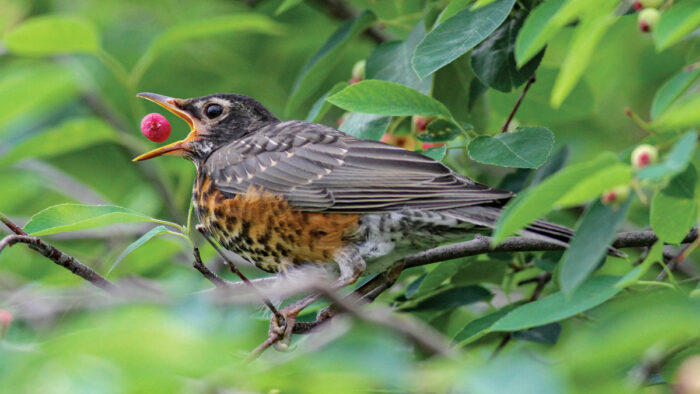
I feel very fortunate to live near a tributary of the Delaware River, a stop on the great Atlantic flyway used by songbirds and raptors as they migrate between Central and South America and the northeastern United States each year. As I write this, birdsong is drifting in through an open window, a sweet cacophony that hides a troubling trend. Songbirds are disappearing.
Habitat loss, pesticides, and the accompanying decline of insect populations have contributed to a loss of 25 to 30 percent of North American songbirds since 1970. (In that time, the populations of some year-round resident species such as robins have increased, likely due to their affinity for suburban landscapes.) A bright spot has been among waterfowl such as ducks and geese, which have seen their numbers increase overall since 1970. Scientists surmise that this is due to stricter hunting regulations and a concerted effort by nonprofit organizations and governments to protect and restore wetland habitat.
Although the news is not as good for the migratory songbirds who fly north each year in search of food and nesting sites to fledge their young, gardeners could make a difference. If each gardener played a small part, we could collectively have a large positive impact. Using waterfowl conservation as a model, we could help to reverse the songbirds’ decline. At the Morris Arboretum, we are beginning a long-term study to see if introducing more native plant species, removing invasive plants, and restoring meadows and hedgerows will have a positive impact on bird diversity. The study focuses on native plants because they host far more caterpillars and other insects than exotic species. Some of the preliminary data looks promising. The following are a few examples of native plants that can improve bird habitat in your backyard.
Trees and shrubs add valuable habitat and seasonal food
Black cherry is big and bountiful
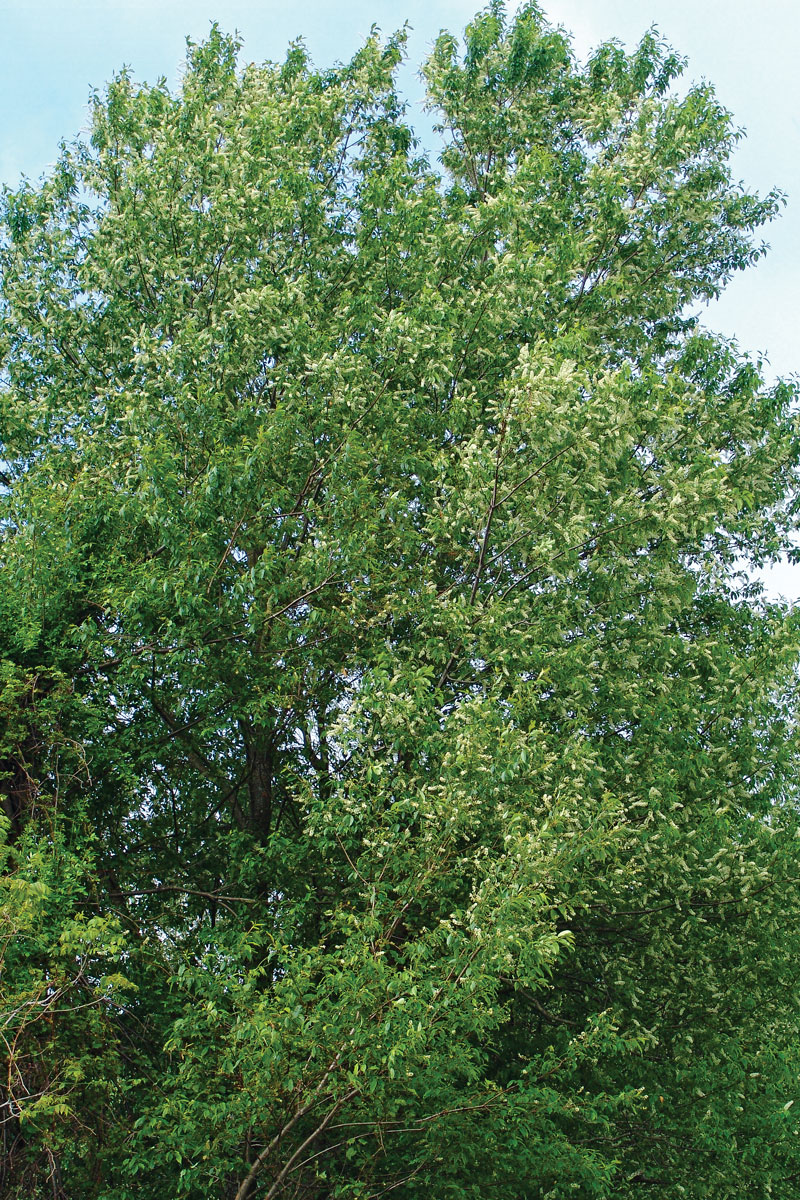
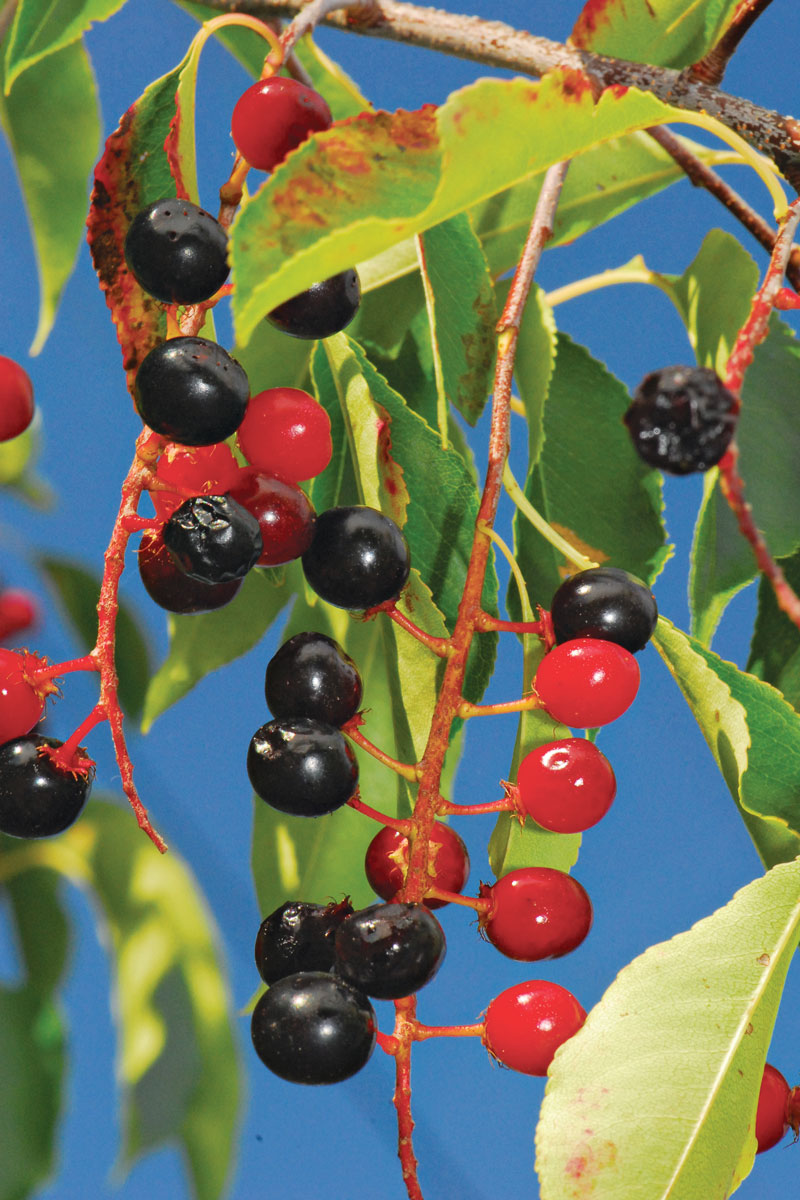
Name: Prunus serotina
Zones: 3–9
Size: 50 to 80 feet tall and 30 to 60 feet wide
Conditions: Full sun to partial shade; moderately moist soil
Native range: Eastern North America, Mexico, Central America
Native trees and shrubs are veritable supermarkets for nesting songbirds. One of my favorites, if I have the space, is black cherry. This medium to large tree grows in a wide range of conditions, from river-bottom forests to coastal dunes. It is preferred by over 100 types of moth and butterfly caterpillars, and the long racemes of white flowers are a favorite of bees and flower flies. Clusters of small black cherries follow in summer. Though not palatable to humans, they are relished by waxwings and other fruit eaters at a time when there are few other fruits available.
For an attractive caterpillar host, plant sassafras

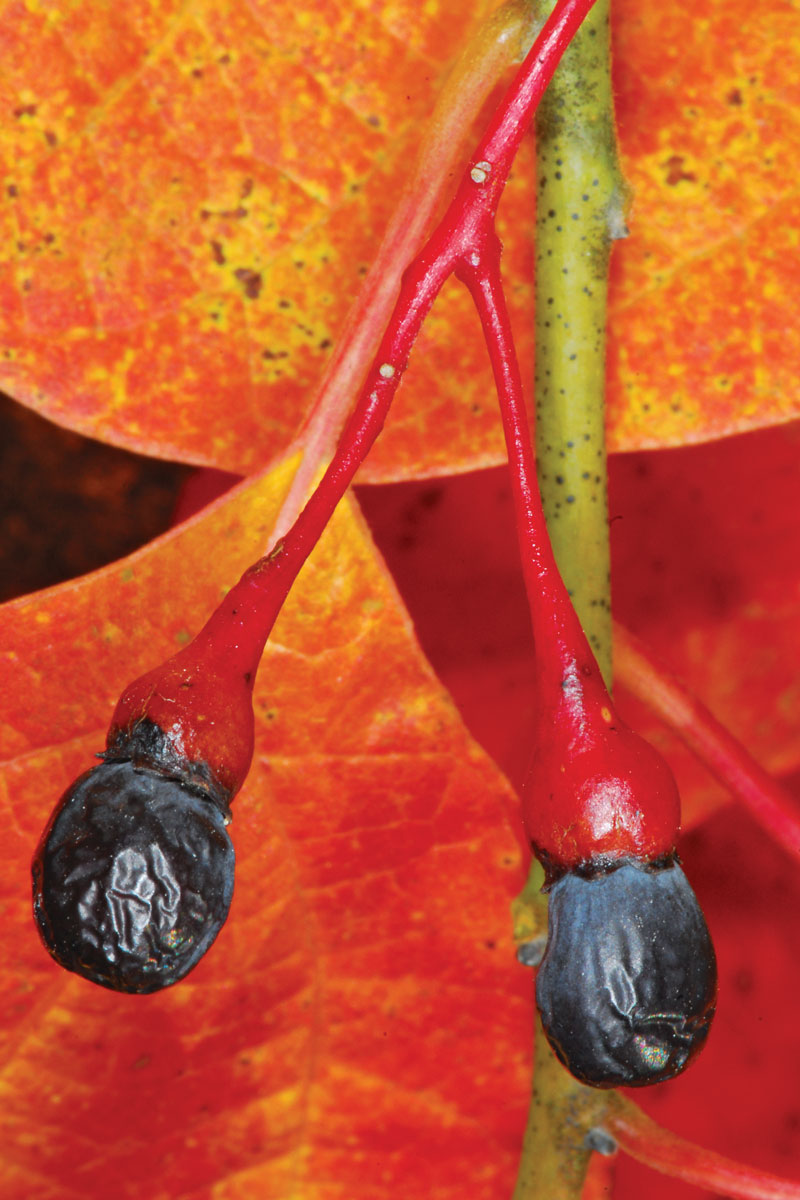
Name: Sassafras albidum
Zones: 4–9
Size: 30 to 60 feet tall and 25 to 40 feet wide
Conditions: Full sun to partial shade; average to moist, well-drained soil
Native range: Eastern North America
Sassafras is a medium-size tree that provides nectar, fruit, and a bounty of caterpillars. It is a unique species with mitten-shaped leaves that hang on tiered branches, giving the whole tree a stacked or layered appearance I can spot even at highway speeds. Sassafras is dioecious, which means that plants are either male or female. Pompoms of light yellow flowers burst from swelling buds along with the emerging leaves, and if there is a male near enough for the bees to find, female trees will produce large crops of small, olive-shaped blue-black fruits in fall. The leaves turn fiery orange, smoldering red, or brilliant yellow in autumn. Sassafras trees “flag”—that is, the leaves turn color when the fruits are ripe to gain the attention of avian passersby. Sassafras is a pioneering tree that favors fencerows and old fields, and it adapts well to a range of soil types as long as it receives plenty of sun. It does tend to send up root sprouts to create groves or thickets, which provide excellent nesting sites and protection.
Allegheny serviceberry provides nesting sites and berries
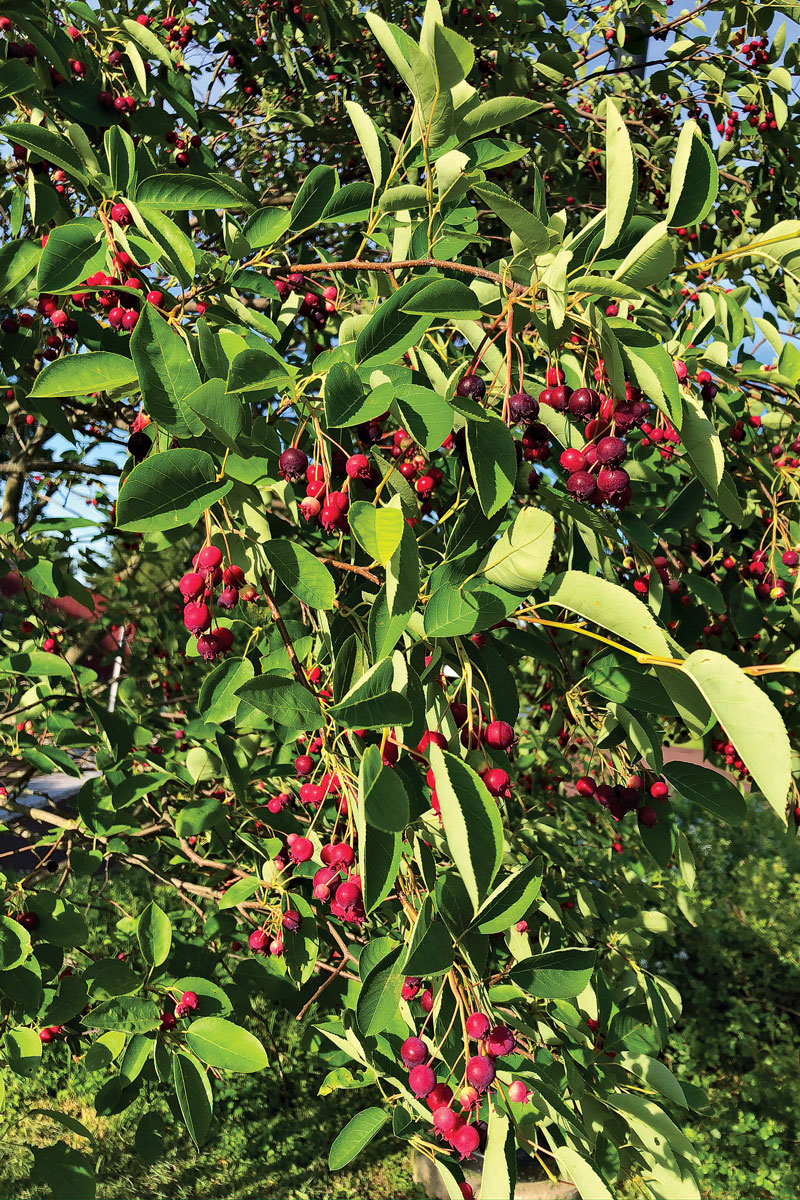
Name: Amelanchier laevis
Zones: 4–8
Size: 15 to 40 feet tall and wide
Conditions: Full sun to partial shade; average to moist, well-drained soil
Native Range: Eastern North America
If you do not have the space for a black cherry, another favorite of waxwings is serviceberry (Amelanchier spp. and cvs., Zones 3–9). There are several species and dozens of cultivars available, but I recommend Allegheny serviceberry as a good one to try for much of the country. This small, multistemmed tree features smooth, gray bark and a fine branching pattern good for nesting. Leaves often emerge with a bronze or reddish cast that fades to green as the white, five-petaled flowers bloom in early spring. It is a member of the rose family, and the flowers bear a passing resemblance to apple or cherry blossoms. Blueberry-size fruits mature to a rosy plum color in early summer and are quite tasty if you can beat the birds to a few.
Rocky Mountain juniper protects birds from bad weather
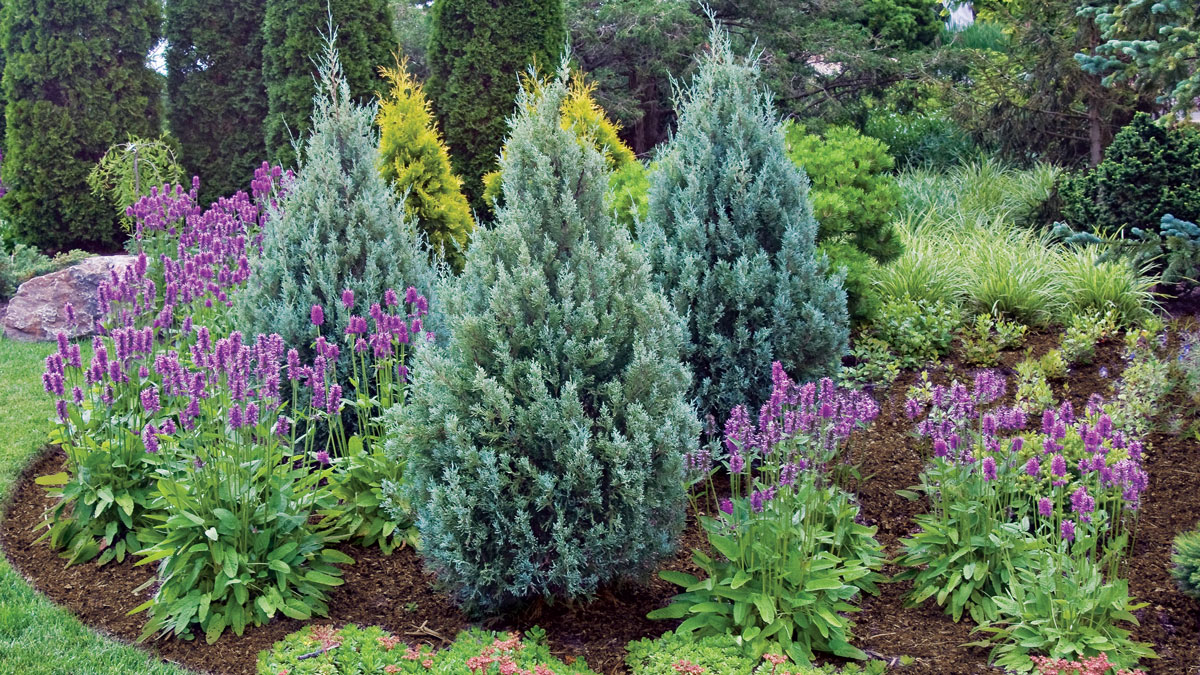
Name: Juniperus scopulorum
Zones: 3–7
Size: 10 to 30 feet tall and 5 to 15 feet wide
Conditions: Full sun; average to dry, well-drained soil
Native Range: Western North America
Native junipers provide wonderful winter shelter for birds. Eastern red cedar (Juniperus virginiana, Zones 2–9) in the East and Rocky Mountain juniper in the West have all the bird-friendly attributes of American holly yet with better cold and drought tolerance. Females produce thousands of gin-scented silvery blue fruits for winter forage, and the sharp evergreen needles and dense branching shield birds from wind and snow. Both species make fine hedges or screens and tolerate wind, salt, and dry, rocky soil quite well.
Plant quick-growing American elderberry for a fruitful autumn
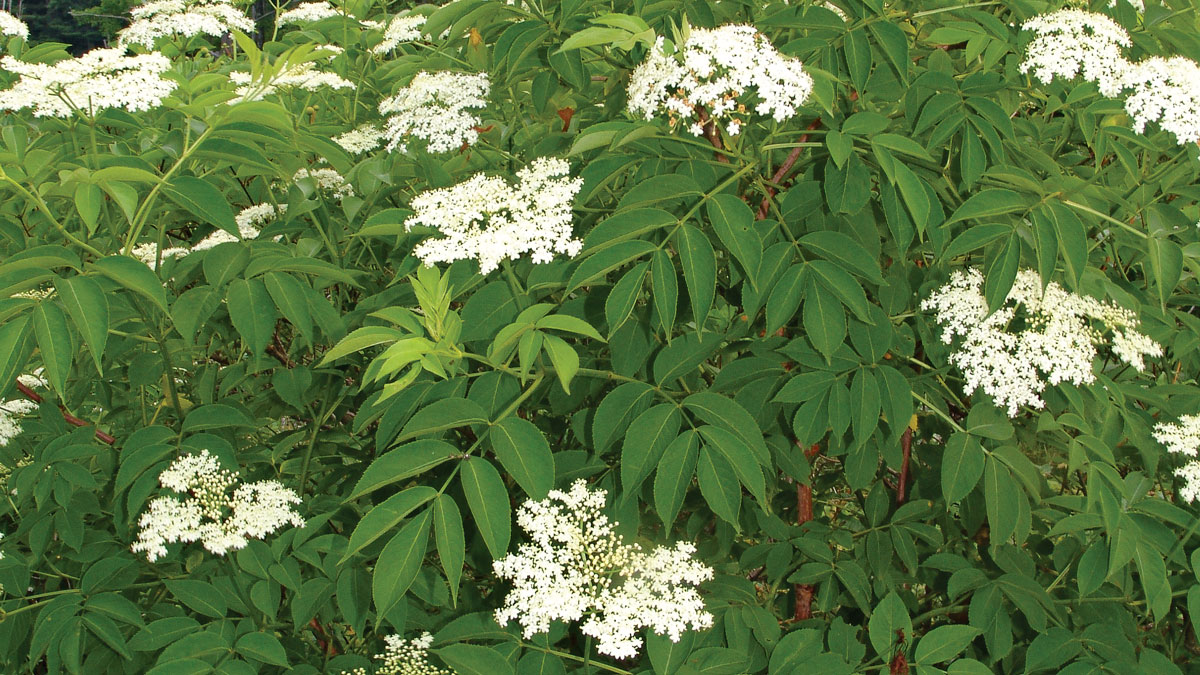
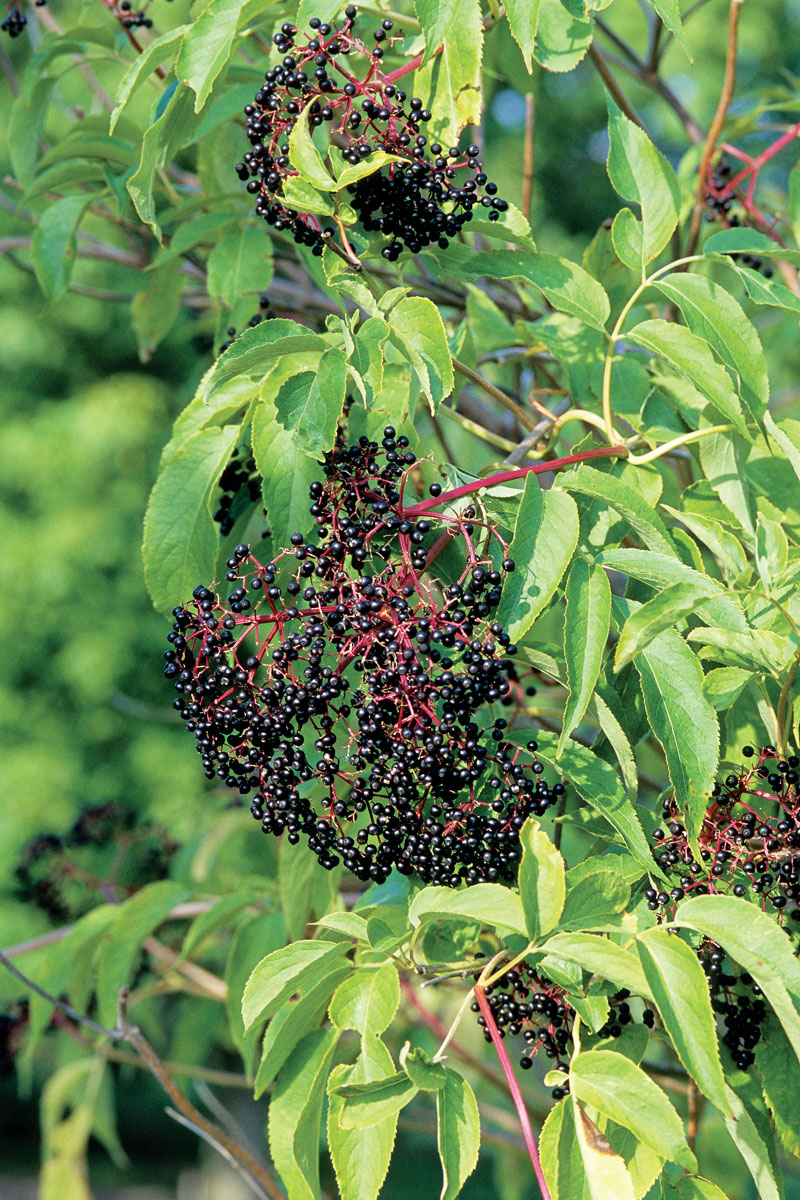
Name: Sambucus canadensis
Zones: 3–9
Size: 5 to 12 feet tall and wide
Conditions: Full sun to partial shade; average to wet, well-drained soil
Native range: North America, Central America, northern South America
There are many fine native shrubs to consider for bird habitat, including viburnums (Viburnum spp. and cvs., Zones 3–9), chokeberries (Aronia spp. and cvs., Zones 3–9), and elderberries (Sambucus spp. and cvs., Zones 3–9). All support caterpillars and pollinators, and all produce large crops of berries in late summer to fall. American elderberry is a satisfying shrub for the impatient gardener. It sends forth thick canes clothed in paired, compound leaves. These are topped in midsummer with heads of lacy white flowers the size of dinner plates that attract butterflies, bees, and flower flies. Tiny but sweet black fruits by the hundreds follow in autumn. Though not dioicous, an elder-berry will produce more fruit if you plant more than one variety together. Because blooms are produced on new growth, you can cut the canes down to stubs in fall or winter to control its size. For the best flowering and fruiting, be sure your shrub gets plenty of moisture and sun.
American holly is a reliable source of winter food and shelter
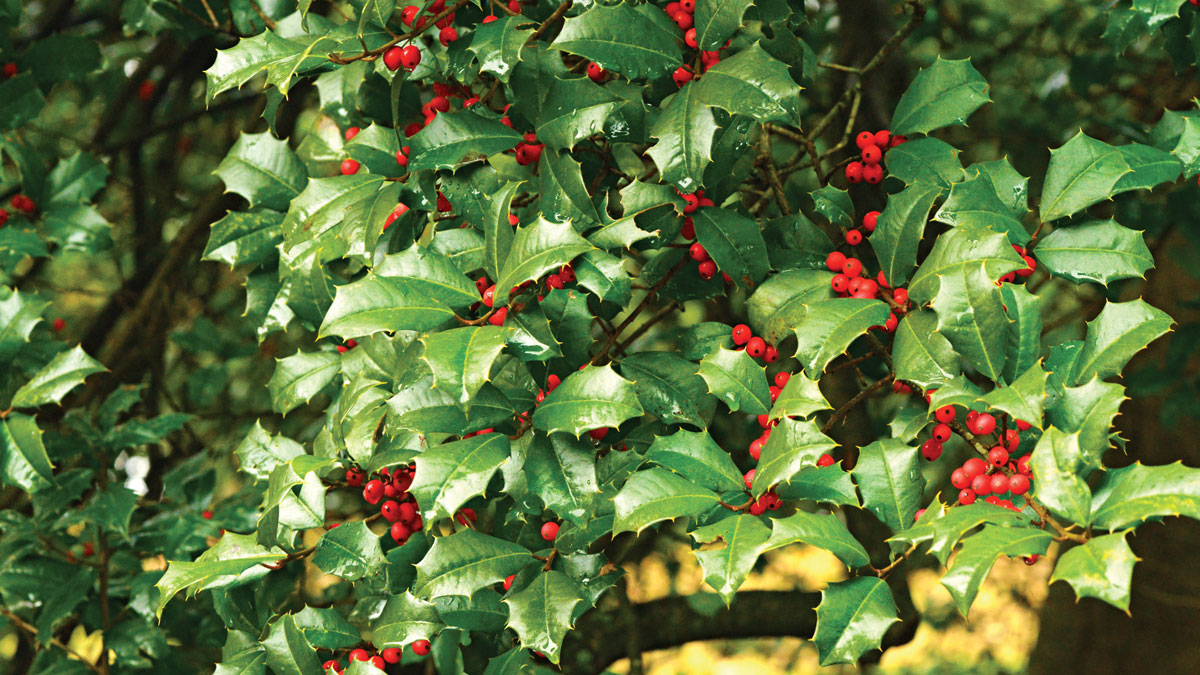
Name: Ilex opaca
Zones: 5–9
Size: 15 to 30 feet tall and 10 to 20 feet wide
Conditions: Full sun to partial shade; consistently moist, acidic, well-drained soil
Native range: Eastern and central United States
For those birds that do not migrate, shelter is important in winter. Evergreen trees and shrubs provide the best protection from predators and chilling winds. My office looks down on a large grove of American holly. Though slow-growing, most of these trees are 75 years old and now 30 or 40 feet tall. Hollies are dioecious, like sassafras, so you will need a male and female for fruit set. The brilliant red berries are not very palatable to birds in fall, but after a month or two of freezing and thawing, the fruits soften up and begin to ferment. Overwintering robins occasionally gorge on the fermented fruits, then frolic drunkenly in the grass below. American holly is a tough, shade-tolerant tree with spiny, deep green leaves that provide outstanding winter protection.
Perennials provide a bounty of seeds and nectar
New England aster and narrow-leaved sunflower are seed factories
The aster family offers many bird-friendly natives for the garden or meadow. Among herbaceous perennials, it is hard to find any group that supports more species of moth and butterfly caterpillars, and the colorful blooms are beloved by many pollinating insects. Leave the spent flowers to go to seed in the fall, as they are a preferred food of sparrows and goldfinches. There are many to choose from, but two that I recommend for ease of care and showy bloom are New England aster (left) and narrow-leaved sunflower (right).
Call in the hummingbirds with trumpet honeysuckle
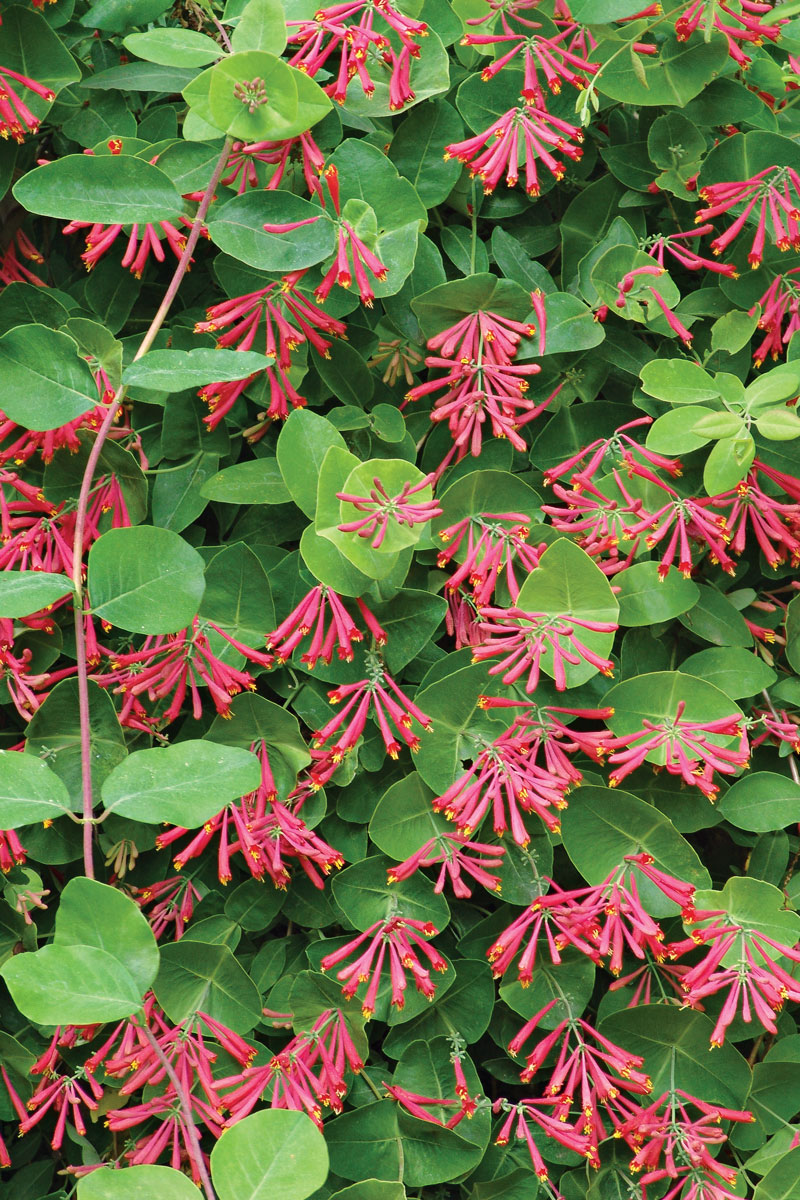
Name: Lonicera sempervirens
Zones: 4–9
Size: 8 to 15 feet tall and 3 to 6 feet wide
Conditions: Full sun; fertile, moist, well-drained soil
Native range: Southeastern United States
I would be remiss not to mention a few plants of special benefit to hummingbirds. Hummingbirds favor brightly colored, tubular flowers with copious nectar supplies, and trumpet honeysuckle fits that bill perfectly. This is a hummingbird feeder you never have to clean; well-grown specimens will bloom most of the summer, and hummingbirds will fight each other for the privilege of sipping from its orange, scarlet, or yellow blooms. This easy-to-grow twining vine blooms best in fertile soil and full sun. You can train it on a trellis or let it scamper over a wall or an old stump.
Cardinal flower is also a hummer favorite
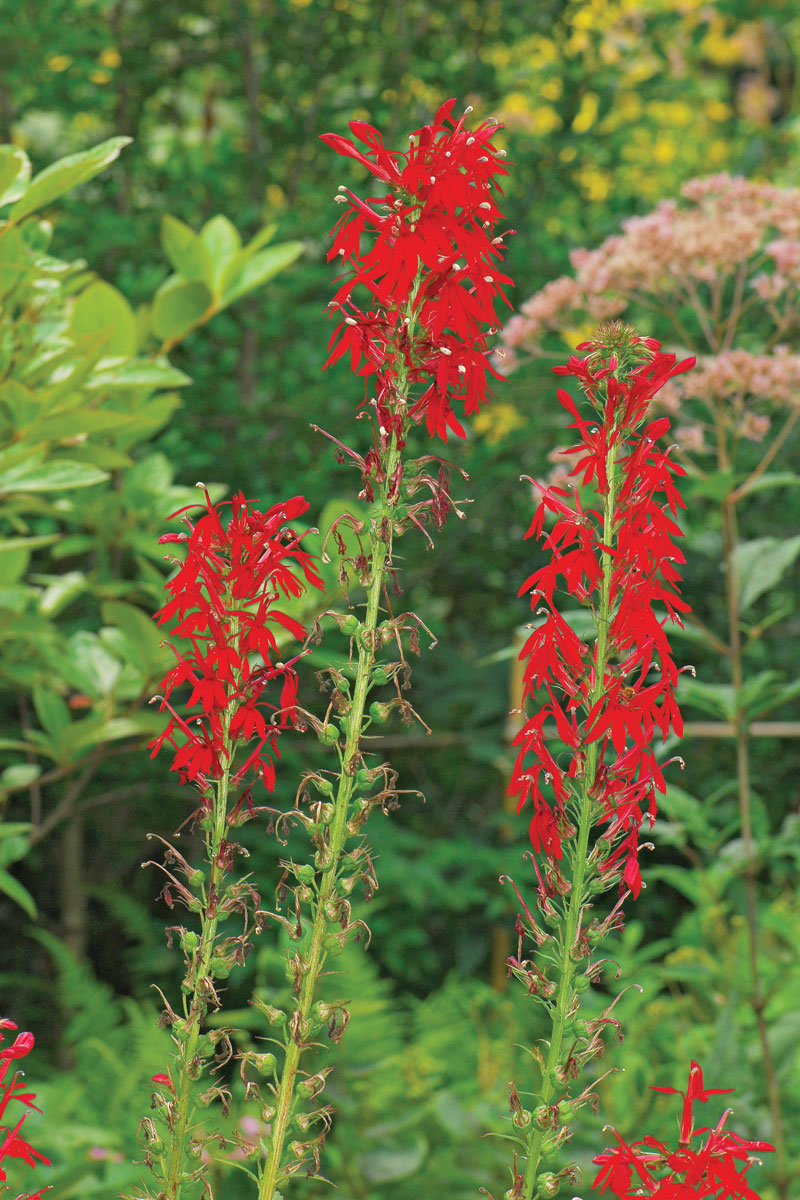
Name: Lobelia cardinalis
Zones: 3–9
Size: 2 to 4 feet tall and 1 to 2 feet wide
Conditions: Full sun to partial shade; fertile, moist to wet soil
Native range: North America, Central America, northern Colombia
Cardinal flower is another foolproof hummingbird magnet. Rosettes of overwintering leaves bolt to become 3- to 5-foot stems topped with brilliant crimson flowers that open over six weeks in mid to late summer. In fall, a plant will develop new rosettes around the base; keep these offsets free of leaves and debris so they can develop into new plants in spring.
Bird-friendly features to enhance your landscape
In addition to planting native trees, shrubs, and wildflowers, here are some additional things to keep in mind if you want to make your yard more bird-friendly.
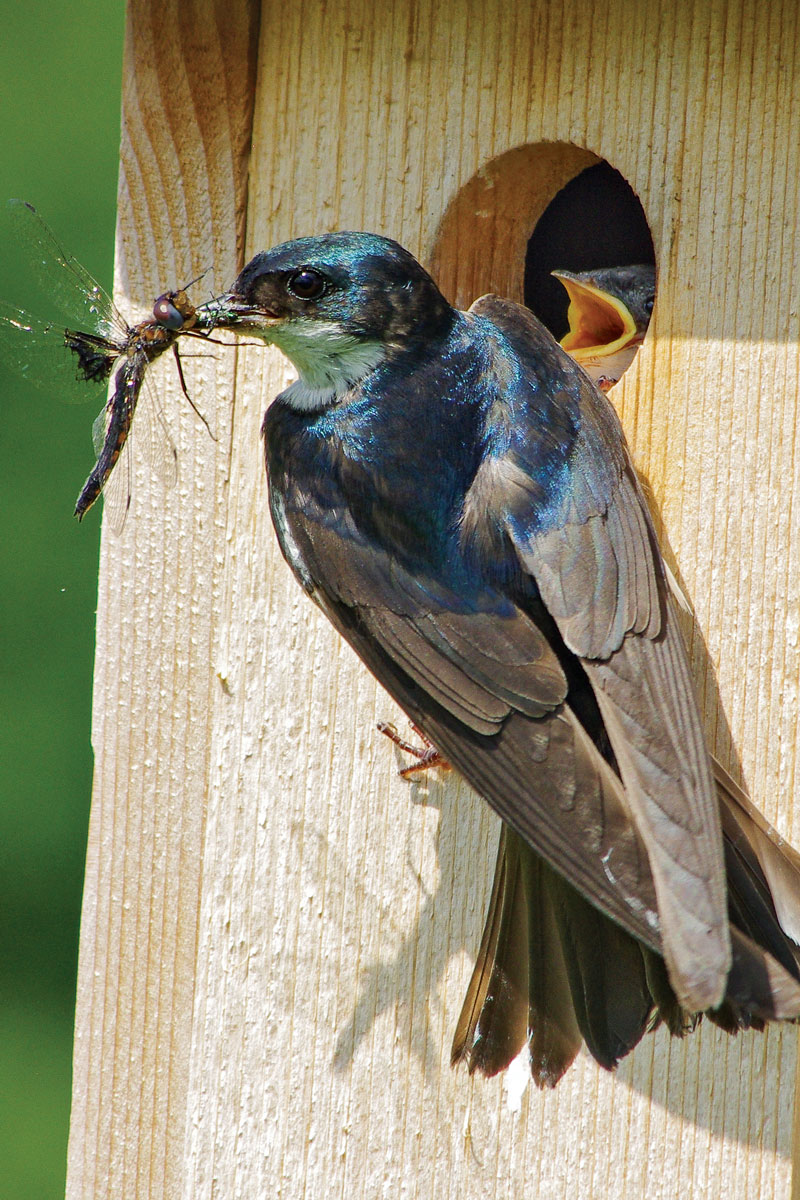
1. Birdhouses really work. Install several sizes for different species. I like to add metal hole protectors of the proper diameters to discourage rodents. Clean out old nesting material in late winter to prepare the houses for the coming spring.
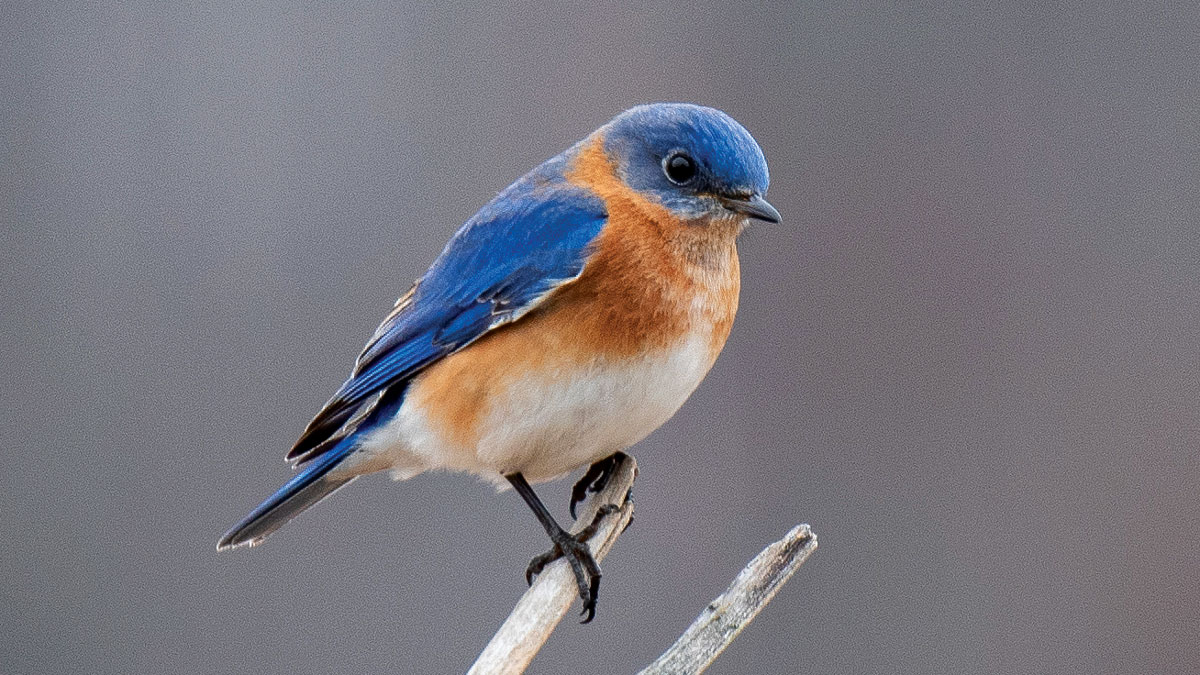
2. Standing dead trees provide nesting sites for many species of birds. Where safe and possible, leave dead trunks standing. At Morris Arboretum, we often “top” dead trees to make them safer and then leave the bottom 20 feet standing for bird habitat.

3. Discarded Christmas trees and piles of woody brush in a hidden corner of the yard provide excellent winter shelter for birds.

4. A year-round, shallow water source is very important. Many options with heaters to keep water from freezing weather are available.
Bill Cullina is executive director of the Morris Arboretum of the University of Pennsylvania in Philadelphia.
Sources
- Forestfarm, Williams, OR; 541-846-7269, forestfarm.com
- Mail Order Natives, Lee, FL; 850-973-7371, mailordernatives.com
- Prairie Moon Nursery, Winona, MN; 866-417-8156, prairiemoon.com
- Wild Ridge Plants, Alpha, NJ; 908-319-7230, wildridgeplants.com
Fine Gardening Recommended Products
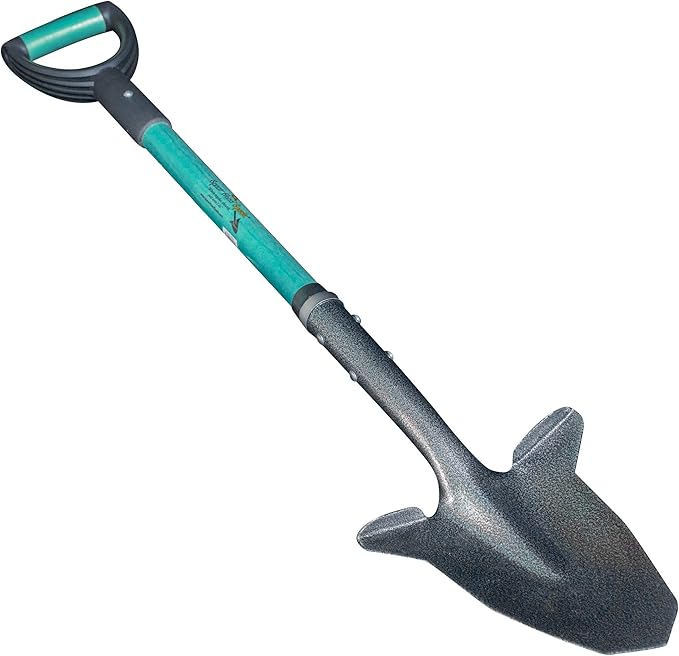
Spearhead Shade Gardening Shovel with Steel-Reinforced Fiberglass Handle
Fine Gardening receives a commission for items purchased through links on this site, including Amazon Associates and other affiliate advertising programs.

ARS Telescoping Long Reach Pruner
Fine Gardening receives a commission for items purchased through links on this site, including Amazon Associates and other affiliate advertising programs.

Planting in a Post-Wild World: Designing Plant Communities for Resilient Landscapes
Fine Gardening receives a commission for items purchased through links on this site, including Amazon Associates and other affiliate advertising programs.



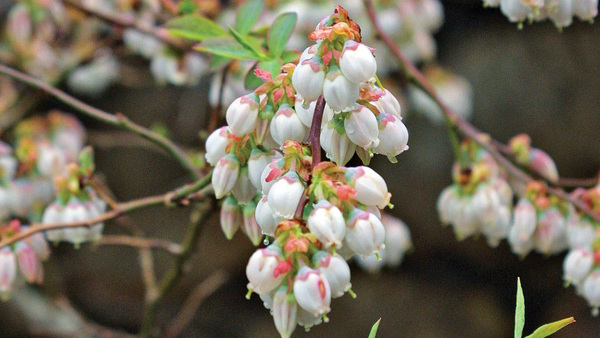
















Comments
Log in or create an account to post a comment.
Sign up Log in